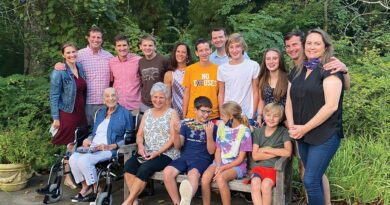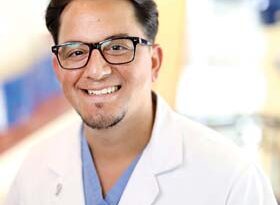Discovering Hope
Published on June 20th, 2011 by Christina Echegaray.
Cancer

When children survive cancer, the fight is not over. Debra Friedman, M.D., the E. Bronson Ingram Chair of Pediatric Oncology, director of the Division of Pediatric Hematology/Oncology and leader of the Cancer Control and Prevention and Cancer Survivorship programs, says Vanderbilt experts are tailoring treatments, making them more effective while causing fewer medical problems. It’s called personalized medicine.
Friedman and colleagues from across the country published new research that better defines the risk of cancers related to childhood therapies. Among 15,000 survivors of childhood cancers tracked between 1970 and 1986, some survivors had an increased risk for skin, breast and other types of cancers as young adults.
Vanderbilt is using this information to find better ways to follow cancer survivors to prevent cancer and other medical problems. But more than that, researchers are exploring the genetics of these patients in depth to find out why they develop problems years after they are cured of cancer. – by Carole Bartoo
Cardiology

How does the human heart form? And how or why does its formation go awry? Heart defects are the most common, serious birth defects, affecting about 35,000 infants or one out of every 125 births annually in the United States.
Scott Baldwin, M.D., the Katrina Overall McDonald Chair of Pediatrics and director of the Division of Pediatric Cardiology, leads a team of Vanderbilt physician-scientists who are working to discover how embryonic cells “talk” to one another inside the developing heart.
In recent research, Baldwin and his colleagues show that endothelial cells, which line blood vessels all over the body, are “conductors” of a complex series of chemically-controlled steps involved in heart development.
The new knowledge about the basic science in this area opens up possibilities for other investigations at Vanderbilt. One new study shows that endothelial cells, active early in heart development, switch roles later in life to sense stressors and signal structural changes to address stress. One theory is that role-switching errors may cause diseases in heart valves and perhaps elsewhere in the circulatory system.
Researchers hope to use their unique basic science research to develop new tests and change the course of heart disease. – by Carole Bartoo
Prematurity

At Vanderbilt, work is under way to explain the earliest triggering events that lead to premature birth and organ damage in premature babies.
Lou Muglia, M.D., Ph.D., vice chair for Research Affairs in the Vanderbilt University School of Medicine’s Department of Pediatrics, is unraveling the mystery of the timing of birth. His most recent work shows that humans only recently evolved to shortened length of gestation. His work, funded in part by the March of Dimes, zeroes in on a few key genes linked with the timing of birth, genes Muglia hopes will one day identify women at high risk, before they deliver early.
And Judy Aschner, M.D., the Julia Carell Stadler Professor of Pediatrics at Vanderbilt University and director of the Mildred Stahlman Division of Neonatology, is investigating why the lungs of some premature babies suffer terrible damage. Her new five-year grant from the National Institutes of Health (NIH) in concert with another NIH grant awarded to Candice Fike, M.D., professor of Neonatology, will allow Vanderbilt researchers to find simple tests that will alert doctors that damage is under way, and find new treatments to head off lung disease before it can begin.
“One of the great strengths about Vanderbilt is the collaboration we have with others,” Aschner said. “For example, one of my colleagues is examining the basic science of how low oxygen can damage premature lungs. She is doing the necessary, nitty gritty metabolic signaling work so that we will be able to design therapies that are effective in preventing this damage.” – by Carole Bartoo


